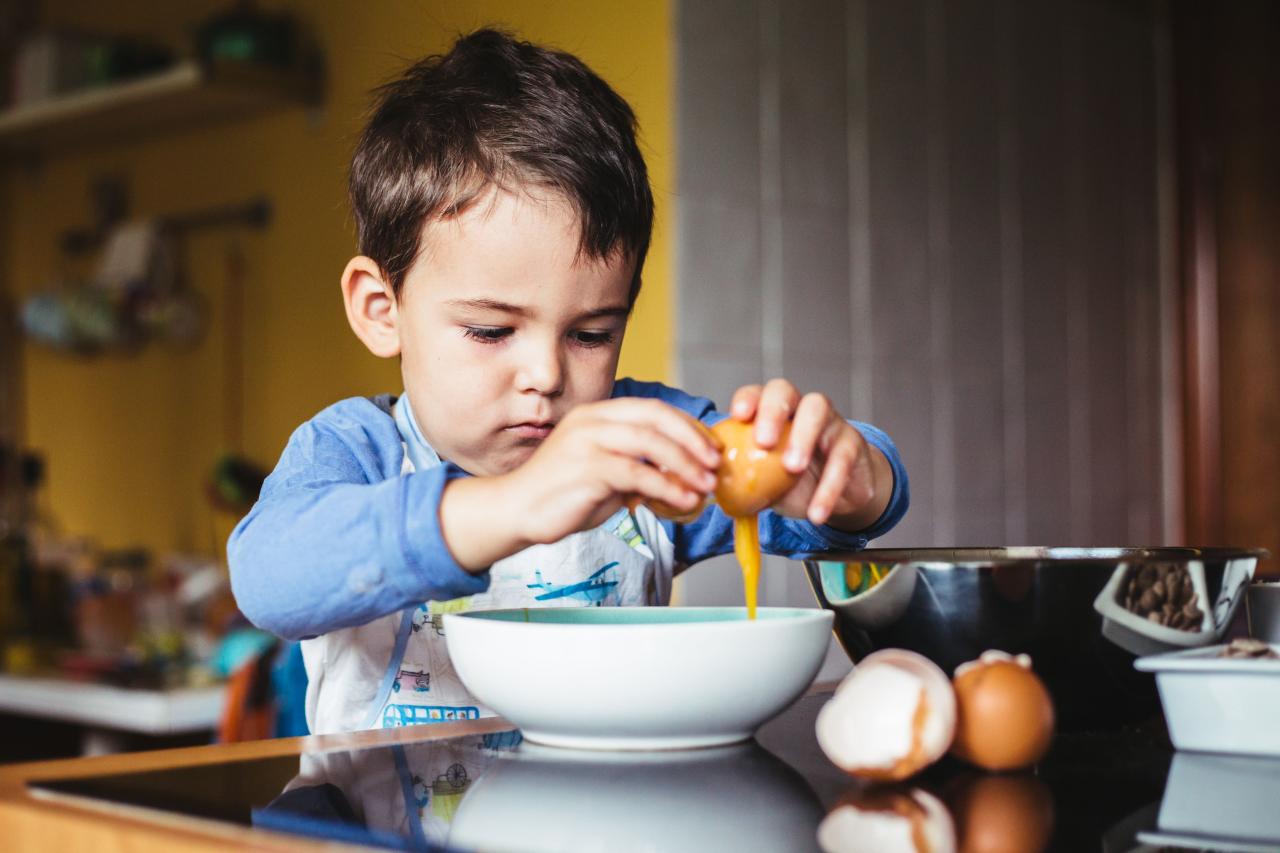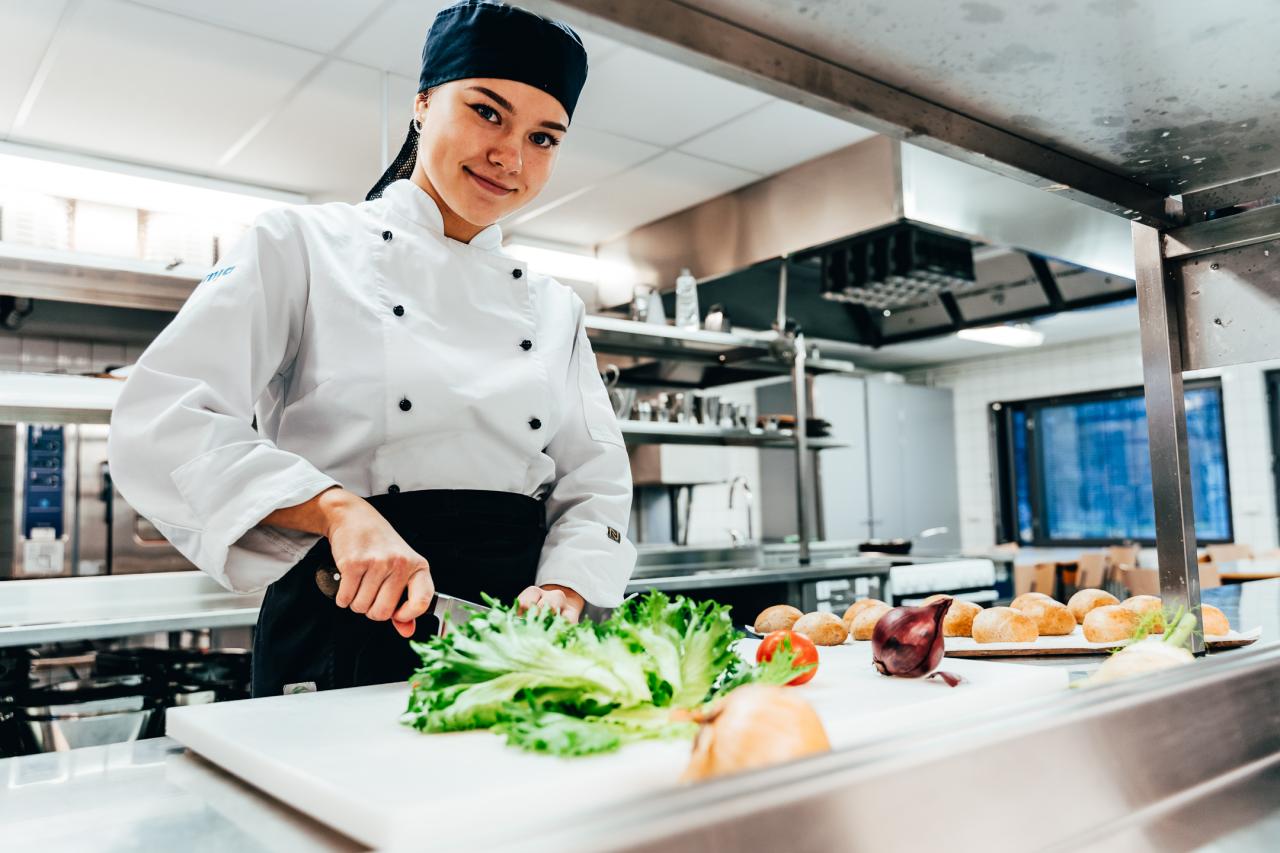Learning how to cook gluten free recipes opens the door to healthier eating habits and inclusive meal options suitable for those with gluten sensitivities or celiac disease. This comprehensive guide provides essential insights into gluten-free cooking, from understanding basic ingredients to mastering baking techniques, ensuring you can create delicious dishes confidently.
Discover practical tips for transitioning to a gluten-free diet, identify key pantry items, and explore creative recipes that cater to various tastes and dietary needs. With detailed instructions and troubleshooting advice, this guide aims to empower you to prepare nutritious and flavorful gluten-free meals with ease.
Introduction to Gluten-Free Cooking
Gluten-free cooking revolves around the preparation of meals that exclude gluten, a protein composite found in wheat, barley, rye, and their derivatives. This dietary approach has gained significant popularity due to its health benefits, particularly for individuals with gluten sensitivities, celiac disease, or wheat allergies, as well as for those seeking a healthier lifestyle. Transitioning to gluten-free recipes involves understanding alternative ingredients and mastering new cooking techniques that ensure flavor and texture are preserved.
Fundamentally, gluten-free cooking focuses on substituting traditional wheat-based products with naturally gluten-free options or specially formulated alternatives. This shift not only reduces the risk of adverse health reactions but also introduces a diverse array of ingredients that can enhance nutritional profiles and culinary creativity. Detailed knowledge of suitable substitutes and proper ingredient selection is crucial for creating delicious and wholesome gluten-free dishes.
Common Gluten-Containing Ingredients Replaced in Recipes
Many traditional recipes rely heavily on gluten-containing ingredients such as wheat flour, bread crumbs, and certain processed foods. In gluten-free cooking, these are replaced with a variety of alternatives that mimic texture and taste without gluten. Understanding these substitutes enables cooks to adapt a wide range of recipes successfully, ensuring that the final dishes are both satisfying and safe for those avoiding gluten.
| Ingredient | Substitute | Notes |
|---|---|---|
| Wheat Flour | Almond Flour, Coconut Flour, Gluten-Free All-Purpose Flour | Each substitute has unique properties; almond flour adds moisture, coconut flour is dense, and gluten-free all-purpose blends offer versatility. |
| Bread Crumbs | Ground Gluten-Free Crackers, Oats, Gluten-Free Panko | Use gluten-free panko for a crispy coating; oats should be certified gluten-free to avoid cross-contamination. |
| Soy Sauce | Coconut Aminos, Gluten-Free Tamari | Both options provide savory umami flavor; tamari is a direct soy sauce alternative. |
| Barley and Rye | Millet, Quinoa, Buckwheat | These grains are naturally gluten-free and can be used in salads, soups, and as side dishes. |
| Pasta | Rice Noodles, Quinoa Pasta, Chickpea Pasta | These options provide similar texture and are suitable for a variety of dishes. |
When starting out in gluten-free cooking, it is important to familiarize oneself with these ingredients and their specific characteristics. Incorporating a variety of gluten-free grains and flours can significantly enhance the flavor, texture, and nutritional value of dishes. Additionally, reading labels carefully and purchasing certified gluten-free products ensures safety and minimizes cross-contamination risks.
Tip for Beginners: Begin with simple recipes that highlight naturally gluten-free ingredients, such as rice dishes, salads, and grilled proteins, to build confidence and understanding of how different substitutes behave during cooking and baking.
Essential Gluten-Free Pantry Items

Maintaining a well-stocked gluten-free pantry is fundamental for creating delicious, safe, and versatile meals. Having the right ingredients on hand ensures that gluten-free cooking and baking are both enjoyable and successful, whether you’re preparing everyday dishes or special treats. A thoughtfully curated pantry allows for spontaneity in meal planning and guarantees that cross-contamination risks are minimized.
When selecting gluten-free ingredients, it’s crucial to understand their purpose and storage needs. Additionally, choosing high-quality products free from cross-contact with gluten-containing grains helps maintain the integrity of your gluten-free diet. Below, you’ll find categorized essential items, detailed explanations, and tips for proper storage and product selection.
Grains, Flours, Binders, and Thickeners
For gluten-free cooking and baking, a variety of grains, flours, binders, and thickeners are indispensable. These ingredients form the foundation for many recipes and can be combined to achieve desirable textures and flavors. Knowing which items to keep on hand simplifies the process of creating everything from bread to sauces.
Grains
- Quinoa: A complete protein grain rich in nutrients, ideal for salads, pilafs, and side dishes.
- Rice: Versatile and widely used in countless recipes, including risottos, sushi, and stir-fries.
- Cornmeal and Polenta: Essential for baking, coating, or creating creamy textures in dishes.
- Millet: A mild-flavored, nutritious grain suitable for porridge or as a rice substitute.
Flours
- Almond Flour: Adds moisture and a rich flavor, perfect for cakes, cookies, and breading.
- Coconut Flour: Highly absorbent; best when combined with other flours for baking.
- Sweet Rice Flour: Creates a sticky, chewy texture in Asian desserts and gluten-free bread.
- Tapioca Flour: Provides elasticity and crispiness, excellent in doughs and puddings.
- Sorghum Flour: Offers a mild, sweet flavor and is good for muffins and pancakes.
Binders
- Xanthan Gum: A common binder that mimics gluten’s elasticity in baked goods.
- Guar Gum: Similar to xanthan gum, used to improve dough structure and crumb.
- Agar-Agar: Plant-based gelatin substitute for thickening and setting desserts.
Thickeners
- Cornstarch: Used for sauces, soups, and custards to achieve a smooth consistency.
- Tapioca Starch: Adds gloss and thickness to fillings and puddings.
- Arrowroot Powder: An excellent thickening agent that works well with acidic ingredients.
Product Selection and Storage Tips
When choosing gluten-free products, opt for items that are certified gluten-free by reputable organizations. Checking labels for certification labels, such as GFCO or USDA Organic, helps ensure the product meets strict gluten-free standards. Prioritize products stored in airtight containers in a cool, dry place to maintain freshness and prevent contamination.
Cross-contamination is a significant concern in gluten-free cooking. Always select products that are processed in dedicated facilities or verified gluten-free to avoid accidental ingestion of gluten traces.
Quality control is essential; look for products with minimal additives and preservatives to get the best flavor and nutritional value. Manufacturers that provide transparent sourcing and manufacturing information can help consumers make informed choices, ensuring a safe and satisfying gluten-free culinary experience.
Techniques for Successful Gluten-Free Baking
Achieving optimal texture and rise in gluten-free baked goods requires understanding specific techniques that compensate for the absence of gluten’s elasticity. Proper methods enhance not only the appearance but also the mouthfeel and structural integrity of breads, muffins, and cakes. Mastering these techniques ensures consistently delicious results that rival traditional baked items.
Gluten-free baking involves careful adjustments in ingredient ratios, mixing procedures, and baking conditions. By employing proven methods, bakers can prevent common issues such as dense textures, poor rise, and crumbling, resulting in items that are both appealing and enjoyable to eat.
Methods to Improve Texture and Rise in Gluten-Free Baked Goods
Enhancing the texture and rise of gluten-free baked goods revolves around the strategic use of specific ingredients and techniques that mimic gluten’s properties. Incorporating binding agents, adjusting moisture levels, and employing proper mixing methods are key to achieving light, airy, and cohesive baked items.
- Use of Leavening Agents: Incorporate appropriate amounts of baking powder, baking soda, or yeast depending on the recipe. These agents create carbon dioxide that helps the batter or dough rise during baking.
- Inclusion of Binders: Add binding agents like xanthan gum, guar gum, or psyllium husk to provide structure and improve elasticity. Typically, ½ to 1 teaspoon per cup of flour is sufficient.
- Optimal Mixing: Mix ingredients just until combined to prevent overworking the batter, which can reduce the rise. Gentle folding helps incorporate air without deflating the mixture.
- Adjusting Moisture Content: Ensuring proper hydration of flours and binders promotes better crumb and prevents dryness or crumbliness. Hydration times may need to be extended slightly compared to traditional recipes.
- Temperature Control: Baking at correct temperatures ensures proper expansion and setting of the structure. Using an oven thermometer can help maintain accurate heat.
Step-by-Step Procedures for Preparing Gluten-Free Batter
Consistent results in gluten-free baking depend on precise preparation processes. The following steps Artikel best practices for preparing batters for bread, muffins, and cakes:
- Gather and measure ingredients accurately: Use a digital scale for flours and precise measuring cups for liquids and leavening agents.
- Mix dry ingredients thoroughly: Combine gluten-free flours, binders, and leavening agents in a large bowl to ensure even distribution.
- Prepare wet ingredients: In a separate bowl, whisk together eggs, liquids (milk or alternatives), oils, and sweeteners until smooth.
- Integrate wet and dry components: Gradually add wet ingredients to dry, folding gently to incorporate air. For bread dough, knead lightly; for muffins and cakes, avoid overmixing to prevent toughness.
- Rest the batter or dough: Allow it to sit for 10-15 minutes, which helps hydrate the flours and develop better texture.
- Bake promptly: Transfer the batter to preheated oven molds or pans and bake immediately to optimize rise and texture.
Common Pitfalls and Solutions in Gluten-Free Baking
Understanding frequent challenges allows bakers to troubleshoot effectively and improve outcomes:
- Dense or heavy baked goods: Address by increasing leavening agents, using lighter flours (like rice or tapioca), and avoiding overmixing.
- Poor rise or flat products: Ensure fresh leavening agents, proper temperature, and adequate batter aeration. Consider adding more binding agents if the structure is weak.
- Crumbly or dry texture: Improve moisture retention by adjusting liquids or adding moisture-rich ingredients like yogurt or applesauce.
- Uneven baking or burning: Use calibrated oven thermometers and position racks appropriately to promote even heat distribution.
- Difficulty in handling batter or dough: Use parchment paper, silicone mats, or well-greased pans to prevent sticking and facilitate handling.
Essential Tools and Equipment for Gluten-Free Baking
Having the right tools streamlines the baking process and enhances consistency. The following equipment is fundamental for gluten-free baking success:
| Tool/Equipment | Purpose |
|---|---|
| Digital kitchen scale | Precise measurement of flours and ingredients |
| Mixing bowls (various sizes) | Combining ingredients and preparing batter |
| Measuring cups and spoons | Accurate measurement of liquids and small quantities |
| Silicone spatulas and whisks | Folding ingredients, mixing batters without deflating air |
| Stand mixer or hand mixer | Uniform mixing, especially for thicker batters or doughs |
| Oven thermometer | Monitoring and maintaining accurate baking temperatures |
| Baking pans (metal, silicone, glass) | Shaping baked goods; select appropriate size and material for specific recipes |
| Cooling racks | Allow baked products to cool evenly and prevent sogginess |
| Parchment paper or silicone baking mats | Prevent sticking and facilitate easy removal from pans |
Popular Gluten-Free Recipes
Exploring a variety of gluten-free recipes allows individuals with gluten sensitivities or celiac disease to enjoy diverse, flavorful meals without compromising their health. From hearty breakfast options to satisfying main courses and tasty snacks, there is an array of delicious dishes that cater to different tastes and dietary preferences.
In this section, we will delve into some beloved gluten-free recipes, providing detailed preparation methods, ingredient variations, and tips for customizing each dish to suit specific dietary needs. Whether you are preparing a nutritious breakfast, an easy snack, or a filling main course, these recipes exemplify the versatility and richness of gluten-free cooking.
Gluten-Free Breakfast Dishes
Breakfast is an essential meal that sets the tone for the day, and gluten-free options can be both nutritious and satisfying. Popular choices include oatmeal made from gluten-free grains, protein-packed smoothies, and savory egg dishes. These recipes emphasize the importance of incorporating fiber, protein, and healthy fats to keep energy levels stable throughout the morning.
| Recipe | Ingredients | Preparation Steps |
|---|---|---|
| Gluten-Free Banana Pancakes |
|
|
| Mixed Berry Smoothie |
|
|
Alternative ingredients and variations can be incorporated to cater to different dietary requirements. For example, replacing Greek yogurt with coconut yogurt makes the smoothie dairy-free, or adding chia seeds boosts fiber content. Sweeteners can be adjusted or omitted depending on individual preferences or dietary restrictions, such as replacing honey with stevia for vegan diets.
Customization tips include adding nuts or seeds for added crunch, incorporating spices like cinnamon or nutmeg for flavor depth, and adjusting the consistency with more or less liquid. These flexible recipes enable cooks to tailor their breakfast options to personal tastes and nutritional goals, ensuring a delightful start to each day.
Cooking Tips and Troubleshooting

Mastering gluten-free cooking involves more than just substituting ingredients; it requires understanding specific techniques to improve flavor, texture, and overall dish quality. This section offers practical advice and solutions to common challenges faced by cooks when preparing gluten-free recipes, ensuring a successful and delicious outcome every time.
By implementing these tips and troubleshooting strategies, you can overcome typical hurdles such as texture inconsistencies, flavor deficits, and storage concerns. From enhancing the mouthfeel of baked goods to preserving freshness, these guidelines will help you refine your gluten-free culinary skills and enjoy a variety of satisfying dishes.
Enhancing Flavor and Texture in Gluten-Free Dishes
Gluten-free recipes often require additional techniques to develop rich flavors and appealing textures. Using a combination of natural flavor enhancers such as herbs, spices, and aromatic ingredients can significantly elevate the taste profile. Incorporating ingredients like toasted nuts or seeds adds depth and crunch, while balancing moisture levels ensures baked goods are tender yet well-structured.
Replacing gluten’s elastic properties with alternatives such as xanthan gum or guar gum can improve the cohesion and elasticity of doughs and batters. Properly balancing wet and dry ingredients, along with precise mixing methods—such as gentle folding or beating—contributes to uniform textures and prevents common issues like crumbliness or density.
Flavor can also be boosted by toasting gluten-free grains or seeds before incorporating them into recipes, which releases aromatic oils and enhances overall taste. Additionally, experimenting with natural sweeteners or umami-rich ingredients, like mushrooms or aged cheeses, can compensate for flavor deficits often encountered in gluten-free cooking.
Common Issues in Gluten-Free Cooking and Practical Solutions
Despite careful preparation, gluten-free cooking can present several hurdles. Understanding these issues and applying targeted solutions ensures consistently successful results.
| Issue | Cause | Practical Solution |
|---|---|---|
| Crumbly or Dry Baked Goods | Insufficient moisture, over-baking, or lack of proper binding agents | Increase liquid content slightly, add moisture-rich ingredients like applesauce or yogurt, and ensure the correct amount of binder such as xanthan gum is used. Avoid over-baking by monitoring oven time closely. |
| Dense or Heavy Texture | Incorrect flour blend ratios, insufficient aeration, or overmixing | Use a well-balanced gluten-free flour blend with light, airy ingredients like rice flour or cornstarch. Incorporate air by gently folding or whipping batter, and avoid overmixing. |
| Unpleasant Off-Flavors | Use of old or poor-quality ingredients, or overly strong flour blends | Store ingredients properly and prefer fresh, high-quality products. Consider toasting grains or seeds to mellow flavors and add depth. |
| Gummy or Sticky Texture | Excess moisture or inadequate binding | Adjust liquid levels, incorporate enough binding agents such as xanthan gum, and ensure proper mixing to achieve the desired structure. |
| Poor Rising or Flat Results | Insufficient leavening agents or improper mixing | Use appropriate leaveners like baking soda or gluten-free baking powder, and mix thoroughly to distribute leavening evenly. Allow dough or batter to rest for optimal fermentation or rising. |
Troubleshooting Steps for Common Challenges
When gluten-free recipes do not turn out as expected, following systematic troubleshooting steps can help identify and resolve issues efficiently.
- Assess ingredient freshness: Ensure all ingredients, especially flours, leaveners, and binders, are fresh and stored properly to prevent off-flavors or poor rising.
- Check measurements: Use a precise scale for ingredients to maintain consistency, as incorrect ratios can lead to texture problems.
- Adjust moisture content: If baked goods are dry or crumbly, increase liquids or add moist ingredients gradually until the desired texture is achieved.
- Monitor baking time and temperature: Confirm oven calibration and avoid over-baking, which can dry out products. Use a thermometer if necessary.
- Improve mixing technique: Gentle folding or beating can help incorporate air and achieve better texture, especially in batters and doughs.
- Test with small batches: Experiment with minor adjustments in small quantities before scaling up for larger recipes.
Storing Leftovers to Maintain Quality
Proper storage extends the freshness and preserves the texture and flavor of gluten-free dishes. Since gluten-free baked goods and cooked dishes often have a shorter shelf life, following best practices for storage is essential.
- Wrap leftovers tightly in plastic wrap or aluminum foil to prevent exposure to air and moisture loss.
- Use airtight containers for baked goods and cooked items to inhibit freezer burn or staling.
- For longer storage, consider freezing portions in resealable freezer bags, with layers separated by parchment paper to prevent sticking.
- Label stored items with date and contents to monitor freshness and ensure timely consumption.
- Reheat baked goods in a preheated oven or toaster oven to restore crispness, or microwave with a damp paper towel to maintain moisture for moist dishes.
Always allow baked goods to cool completely before storage to prevent condensation and sogginess, which can compromise texture and flavor.
Nutritional Considerations

Maintaining a balanced and nutritious diet is essential when following a gluten-free lifestyle. While gluten-free recipes offer a diverse array of delicious options, it is important to pay attention to their nutritional content to ensure all dietary needs are met. Proper planning can help prevent deficiencies and promote overall health, especially since some gluten-free products may differ nutritionally from their traditional counterparts.A comprehensive understanding of the nutritional profile of gluten-free ingredients enables cooks and meal planners to make informed choices.
Emphasizing nutrient-dense foods and considering supplementation when necessary can support a well-rounded diet, ensuring adequate intake of fiber, protein, vitamins, and minerals vital for optimal wellness.
Comparison of Traditional and Gluten-Free Ingredients
To appreciate the nutritional differences between conventional and gluten-free ingredients, it is helpful to examine specific items commonly used in baking and cooking.
Below is a comparison table illustrating the typical nutritional profiles of some traditional wheat-based ingredients versus their gluten-free substitutes:
| Ingredient | Nutritional Aspect | Traditional Wheat Flour (per 100g) | Gluten-Free Alternative (per 100g) |
|---|---|---|---|
| Carbohydrates | Provides energy; high in starch | 76g | 70g (e.g., rice flour), 65g (e.g., sorghum flour) |
| Protein | Supports tissue repair and immune function | 10g | around 6-8g (varies with alternative flours) |
| Fiber | Promotes digestive health | 2.7g | Lower in some gluten-free flours; e.g., rice flour (~1g), almond flour (~12g) |
| Micronutrients | Vitamins and minerals essential for health | Enriched in some products; contains B vitamins, iron | Varies; some flours are naturally rich in magnesium, vitamin E (almond flour), but often lower in iron unless fortified |
It is important to note that many gluten-free flours tend to be lower in fiber and certain micronutrients unless they are specifically fortified or combined with nutrient-rich ingredients. Therefore, understanding these differences allows for better meal planning and nutritional adequacy.
Strategies for Achieving Nutritional Balance
Effective meal planning for a gluten-free diet involves incorporating a variety of nutrient-dense foods to compensate for any potential deficiencies. Diversifying sources of protein, fiber, vitamins, and minerals is essential to support overall health.
- Include a variety of whole grains and pseudocereals such as quinoa, buckwheat, amaranth, and millet, which are naturally gluten-free and high in fiber, protein, and micronutrients.
- Pair gluten-free baked goods with fresh vegetables, fruits, nuts, and seeds to boost vitamin, mineral, and fiber intake.
- Use legumes, such as lentils, chickpeas, and beans, as protein sources that also contribute to fiber and micronutrients like iron and folate.
- Incorporate dairy or fortified plant-based alternatives to meet calcium and vitamin D requirements.
Additionally, it may be beneficial to consider supplementation or fortified ingredients, especially if certain nutrients such as iron, B vitamins, or fiber are insufficient in the diet. Consulting with a healthcare professional or a registered dietitian can help tailor a personalized plan that ensures all nutritional needs are met without reliance solely on gluten-free processed products.
Summary

In conclusion, mastering how to cook gluten free recipes involves understanding the right ingredients, techniques, and tools to achieve satisfying results. By applying these insights and tips, you can enjoy a diverse array of gluten-free dishes that are both nutritious and delicious. Embrace the journey towards healthier cooking and enjoy the culinary opportunities it presents.